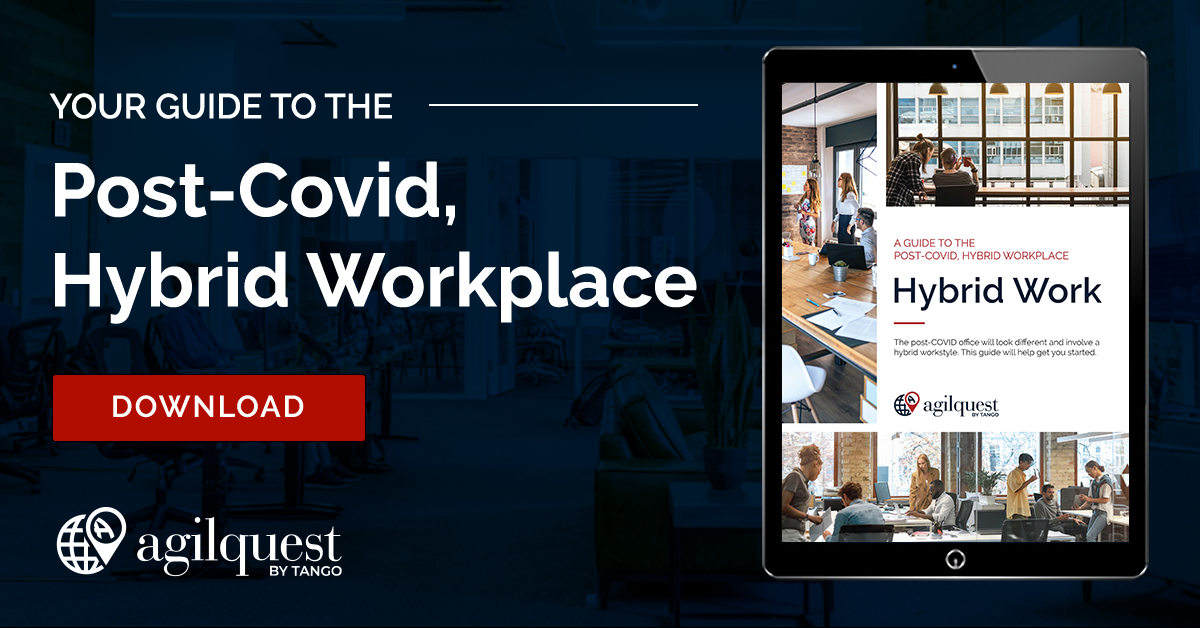Employee Wellbeing and Company Culture in the Hybrid Workplace
A company’s culture is created at its conception and continues to form around the employees and the values of the company over time. It’s an ongoing process encompassing company value and ethics, leadership, and the way employees feel about their work, their company, and its goals.
Prior to the 2020 pandemic, the majority of company cultures were centered around an in-office, traditional work environment. But when people were forced to work from home, organizations quickly realized the traditional workplace wasn’t going to last much longer. Companies needed to prepare themselves and their workforce for remote work and many have found the best way to do this is by creating a hybrid workplace that could work for them now and in the future.
A Shift in the Workplace
Shifting from in-office (pre-pandemic) to remote (pandemic) to hybrid (post-pandemic) is impacting the workforce and our wellbeing. It’s important for companies to understand the effect these shifts are having on employees and to closely consider and support their workforce and their company culture so that employees still feel like they are a part of something more than just someone’s business.

And that feeling needs to be able to reach them wherever they are whether in the office, at home, or at a different remote location.
Putting Your People First
“People over process” is Netflix’s core philosophy and I think it’s one all companies should live by. When you focus on your people, new processes begin to form creating a productive, efficient organization and a strong company culture that talented people want to be a part of.
Before you consider how your company culture will fit into your hybrid workplace, start by understanding how the pandemic has affected employee wellbeing and what employees need to feel welcomed and wanted at their company.
Pandemic’s Hit on Culture and Employee Wellbeing
With the pandemic and much of the workforce required to work remotely, we saw a decrease in mental wellbeing.
Health-Related Worries
 People were most concerned about gaining weight, depression and anxiety, and stress in relation to working from home, this Aetna survey found. And when asked how well employers were supporting these concerns the majority responded with adequate or poor.
People were most concerned about gaining weight, depression and anxiety, and stress in relation to working from home, this Aetna survey found. And when asked how well employers were supporting these concerns the majority responded with adequate or poor.
Work-Related Worries
Employees are also feeling isolated and are lacking creativity and drive. Going from seeing coworkers and managers in-person daily to 0 times in the past year felt the same as driving 80 mph and slamming on the breaks. I think most companies and employees were so focused on staying productive through the change that they didn’t realize what they were missing by no longer having in-person socialization.
It’s important to start thinking about ways you can improve employee wellbeing in the short-term and in the long-term. The shift that will stay through all of this is this digital-first era. Cultures need to find a way to embrace employees remotely and in-office.
5 Ways to Improve Employee Wellbeing
We can start reinventing digital cultures by first improving employee wellbeing. Through research and personal conversations, we came up with some options you can try.

- Implementing a Small Wins Program. The newest initiative at AgilQuest is what we call the Small Wins Program. What this does is allows us to give our coworkers shoutouts each month for small tasks they undertook to help us get to a big win.
For instance, one of our project managers recently created in-depth guides and videos to explain each new feature in our product update. This way customers could use their preferred method of content, video or text, to understand the new features. We also have the opportunity to expand our expertise which is always a win. So, if a coworker takes an educational course to strengthen their knowledge in an area that helps with their job, that’s a win! It might not so closely connect with a big win but in the long run, it does. These little things help big at AgilQuest and it’s important we tell each other!
- Having Bi-Weekly Bright Spots Meetings. At AgilQuest, we meet bi-weekly to go over our company “bright spots,” the successes we’ve seen in the past two weeks, and the employees that had their hands in getting us there. It’s nice to get a shoutout in front of upper management (for obvious reasons) plus it’s helpful to hear everything the company has going on because it is easy to live in our own little department’s world and not realize all the other parts being played.
- Investing in a Wellness Program for Employees. There are a couple of ways you can offer wellness programs to employees whether it’s with health and exercise stipends or programs that come to your office or are offered online. Some programs include stress reduction, health screenings, exercise activities, etc.
United Healthcare offers a Motion incentive that allowed you to get a fitness watch on credit for 6 months and each day you have the chance to reach 3 fitness goals that slowly paid the watch off for you. It was a great way to get me moving especially while working from home every day.
Wellness programs can improve health behaviors, productivity, and employee morale. This in-depth article by SHRM can help you create your wellness program.
- Finding Your Routine. The Harvard Business Review posted about their 5-day routine to keep their remote teams motivated, productive, and in rhythm.
Monday there’s a team meeting to go over what impact they had last week and what they plan to do and how they can help each other in the coming week. Tuesday through Thursday the manager meets with each team member individually to go over how they are doing and help with any challenges they may have. And Friday the team meets again to reflect on the week.
- Taking control of your time. Lastly, we all know expectations for answering every call, chat, and email within minutes of getting them has only increased. Research shows that it takes 23.5 minutes to get back to the task at hand once distracted. When you add up how many emails, calls, and chats you get distracted by a day, how much work are you really getting done?
So why not try having 4 hours a day dedicated to email, chat, meeting time, and the other four hours completely uninterrupted.
“I think we should have core hours, for example, four hours a day where we’re available to colleagues and work on our own schedule the rest of the time.” – 74% agree or strongly agree with this statement.
So, employees take back your time, communicate your needs whether that be more uninterrupted time and/or check-ins with your manager and teammates, and, if you need a boost in appreciation, just know I see you and you are killing it!
For managers, make sure you are congratulating your team on the little and big wins. And understand how important it is for your employees to hear from you and know you are on their side. Start by scheduling weekly or bi-weekly check-ins with each of your employees or set time on your own calendar that is open for employees to reach out and talk with you about anything on their minds.
Reinventing Company Culture in a Hybrid Workplace
Your company culture starts and ends with your employees. It should be changed and molded to create a place people want to work. That sentiment was lost when the pandemic hit but it’s not too late to give it the attention it deserves.
Mentioned above are just a few ways you can work on strengthening employee wellbeing which in turn can help create an updated company culture that supports hybrid work. I can’t imagine we will experience something as life-changing as a pandemic again at least in the next few years, but more hopefully my lifetime, but what it made sure we realize is that change is always right around the corner. Goals change, attitudes and behaviors change, so it’s important to realize your culture needs to change too.
How has your company culture changed to be digital-first and employee-first? Share your tips and tricks in the comments below!
If you’re in charge of the safe return, check out our back to the workplace page and download our guide to the post-COVID, hybrid workplace.

